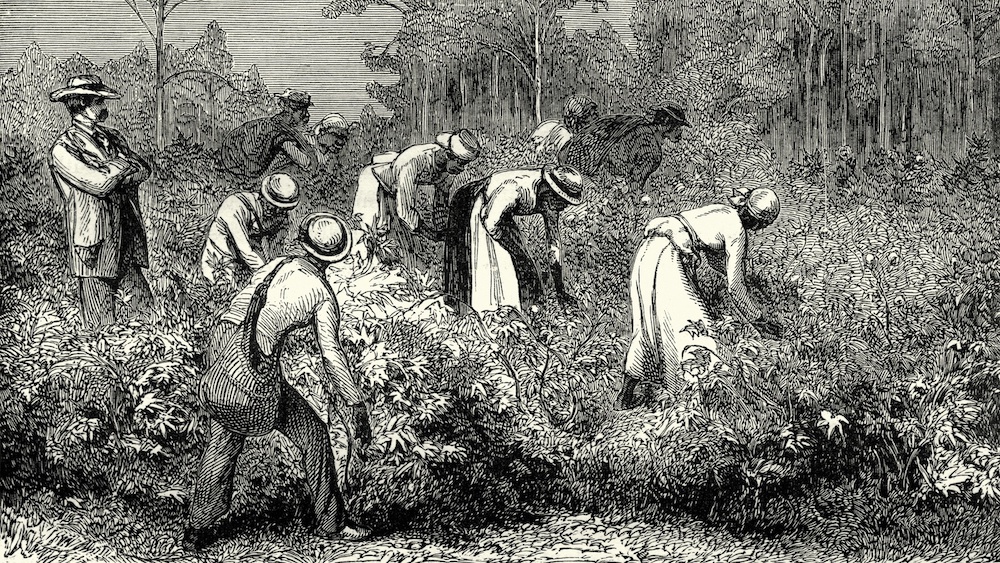If you’re interested in sharing your opinion on any cultural, political or personal topic, create an account here and check out our how-to post to learn more.
____
The debut of the New York Times’ 1619 Project has pushed our nation closer to better understanding the impacts of slavery, which has ironically but not surprisingly been whitewashed for the past 400 years. However, there is more to be done in terms of reeducating Americans, especially white Americans, on the historical realities and complexities of slavery and the impact it carries for all of us today.
As the Director of the Africana Studies Program at Bryn Mawr College, I’ve made this reeducation a focal point of my teaching to ensure students are able to grasp, at the very least, the three main legacies of slavery: intergenerational trauma, imposed subjugation and the falsehood of the white savior.
The first and perhaps most significant legacy of slavery, intergenerational trauma, flourishes due to the spread of disinformation. Our education systems tend to provide students with a truncated version of the actual horrors of slavery, often redacting acts of psychological and physical trauma that still reverberate through Black communities. From the participation in blackface to the slander of the Black Lives Matter movement, these deliberate redactions have widespread implications on race relations today.
These conflicts not only exist between the descendants of slaves and slave owners, but also with those descended from European immigrants who arrived after the Emancipation Proclamation. Contrary to popular belief, a lack of familial responsibility does not exempt this group from collective responsibility. Having white skin in America provides you with privilege that has trickled down from the era of slavery and the racist policies that followed. The presumption from many white Americans that Black Americans can simply pull ourselves up by our bootstraps to get ahead is rooted in their own experiences and opportunities that were never afforded to us.
This institutionalized amnesia combined with a misunderstanding of privilege has helped to perpetuate ongoing intergenerational trauma linked to slavery. This includes economic inequality, housing and wage discrimination, higher rates of maternal mortality for Black women and water crises in Black communities like Flint, Michigan.
The second legacy of slavery, imposed subjugation, continues to deny us full access to power sharing. The use of intimidation tactics and racist stereotypes, as well as brutal rapes and lynching were widespread from slavery up to the 1970s. These acts of violence and discrimination were rarely ever punished and were orchestrated to terrorize us into submission. Today, we’ve seen the impact of this in our criminal justice system. Black Americans are five times more likely to be incarcerated than white Americans and 2.5 times more likely to be killed by police, with little to no consequences for the officers involved — as we’ve seen with Eric Garner, Trayvon Martin and Michael Brown.
We’ve also seen power grabs at the ballot box. While Black men were officially given the right to vote in 1870 and Black women in 1920, many Black Americans, especially in the South, weren’t able to exercise this right until 1965, when Martin Luther King Jr. and other civil rights activists forced Congress and President Johnson to pass the Voting Rights Act. However, the evisceration of the Act by the Supreme Court in 2013 and the subsequent attempts at voter suppression and gerrymandering prove that Black Americans are still being denied the right of self-determination.
The third and most overlooked legacy of slavery is the falsehood of the white savior. This narrative has downplayed or erased our stories and acts of rebellion and resistance, and perpetuated a myth that white people freed us. When I was a little girl, I often wondered why the slaves were so passive in the face of their oppression, seeming to wait to be set free by the white abolitionists. During my 40 years of teaching, I have tried to impart to my students that the major abolitionists were the slaves themselves.
In modern times, the idea of a white savior has been used to promote or defend gentrification and cultural appropriation. Corporations and wealthy funders have poured money into historic Black communities under the guise of rebuilding infrastructure and improving quality of life. However, the reality is increasing rent and housing prices, the closure of local businesses and the forcing out of native residents in favor of more affluent white renters or owners.
There has never been a time when many of us have felt fundamentally safe as full citizens whose contributions to the spiritual and material creation of America are treated as foundational ingredients of that history. However, perhaps one of the proudest legacies of slavery has been this: despite reversals and setbacks, we have learned from our slave ancestors the invaluable lesson that we have an invincible and indomitable spirit. This spirit will continue to live in our communities, but it also deserves to live on in our classrooms.
____
Linda-Susan Beard is an Associate Professor of English and Director of Africana Studies at Bryn Mawr Mawr College. She negotiates between and among the worlds of African American, South African, and post-colonial literatures. She teaches courses on post-apartheid literature, literary and historical reimaginings of transatlantic slavery such as "Toni Morrison and the Art of Narrative Conjure," as well as introductory courses in English and African literatures which examine the dynamics of canon formation.
